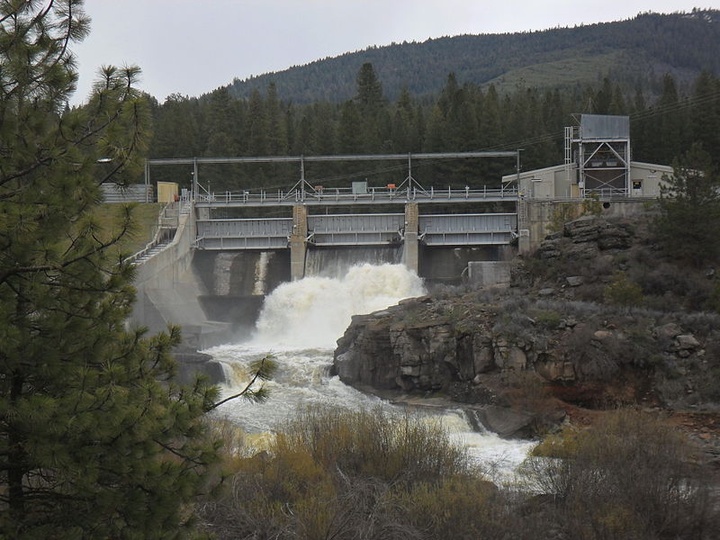
JC Boyle dam. Photo: Wikimedia.
PREVIOUSLY:
###
From the Karuk Tribe:
Thursday evening, the California Water Board will take public comments as the agency processes the Clean Water Act application for removal of the lower four Klamath Dams. The hearing will be held at 5 p.m. at the D Street Community Center in Arcata.
“Removal of the lower four Klamath River Dams would be the single greatest salmon restoration project in US history,” says Karuk Natural Resources Director Leaf Hillman. Hillman, the Karuk Tribe, and many other groups have fought for years to remove the dams that many see as a death sentence for what was once one of the world’s most prolific salmon runs.
[DOCUMENT: “Notice of preparation and scoping meetings for an Environmental Impact Report for the Lower Klamath Project License Surrender.”]
This is not the first time the water board has held meetings on this topic in town; however it’s the first time the water board’s Clean Water Act permitting process considered dam removal. Previously the Water Board was considering permits for dam relicensing.
“Parties agreed to amend the dam removal agreement last year such that it no longer requires congressional approval; however, now must work through the permitting process from the Water Board and the Federal Energy Regulatory Commission,” explained Karuk Natural Resources Policy Advocate Craig Tucker.
For several years, Tribes, conservation groups, irrigators, and fishermen worked with dam owner PacifiCorp and state and federal agencies to broker a Klamath restoration plan that would remove dams, settle water disputes, and fund extensive river restoration projects. This package of connected agreements required congressional approval which never came. So last year parties reworked the dam removal part of the package to proceed on its own. This led PacifiCorp to withdraw their pending application for a Clean Water Act permit to relicense the dams and replace it with an application for permits to remove the dams.
Dam removal typically does not require action by congress as the decades old Federal Power Act set up a process for FERC to consider dam removal applications from dam owners. This process includes getting a Clean Water Act permit.
In order to address some of the fiscal and liability concerns of PacifiCorp, parties to the dam removal agreement created a non-profit called the Klamath River Renewal Corporation to take over the dams and oversee their removal in 2020.
The Karuk Tribe urges dam removal advocates to attend Thursday’s meeting and let the Water Board know that dam removal is a vital step towards restoring water quality and fisheries in the Klamath River.
CLICK TO MANAGE